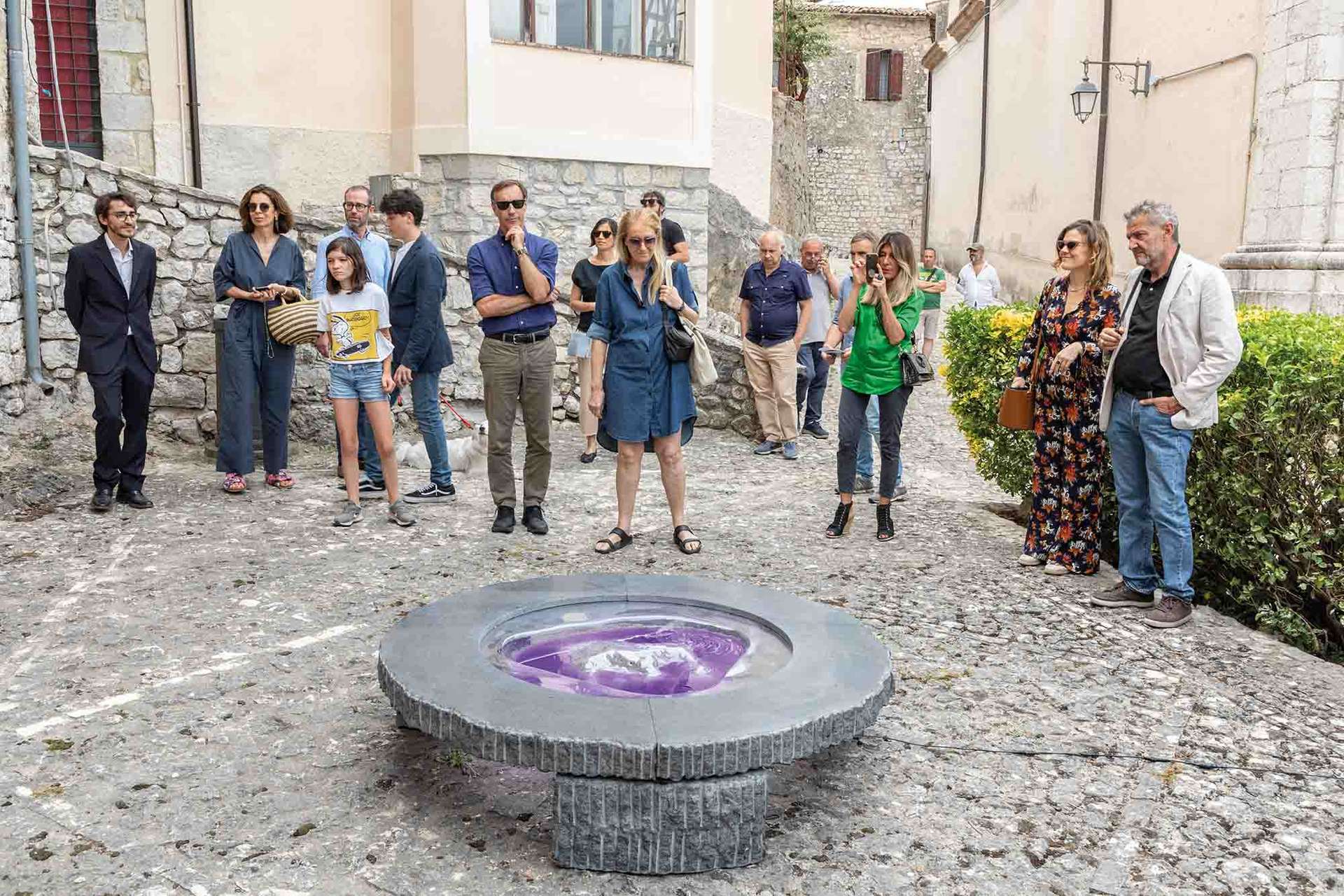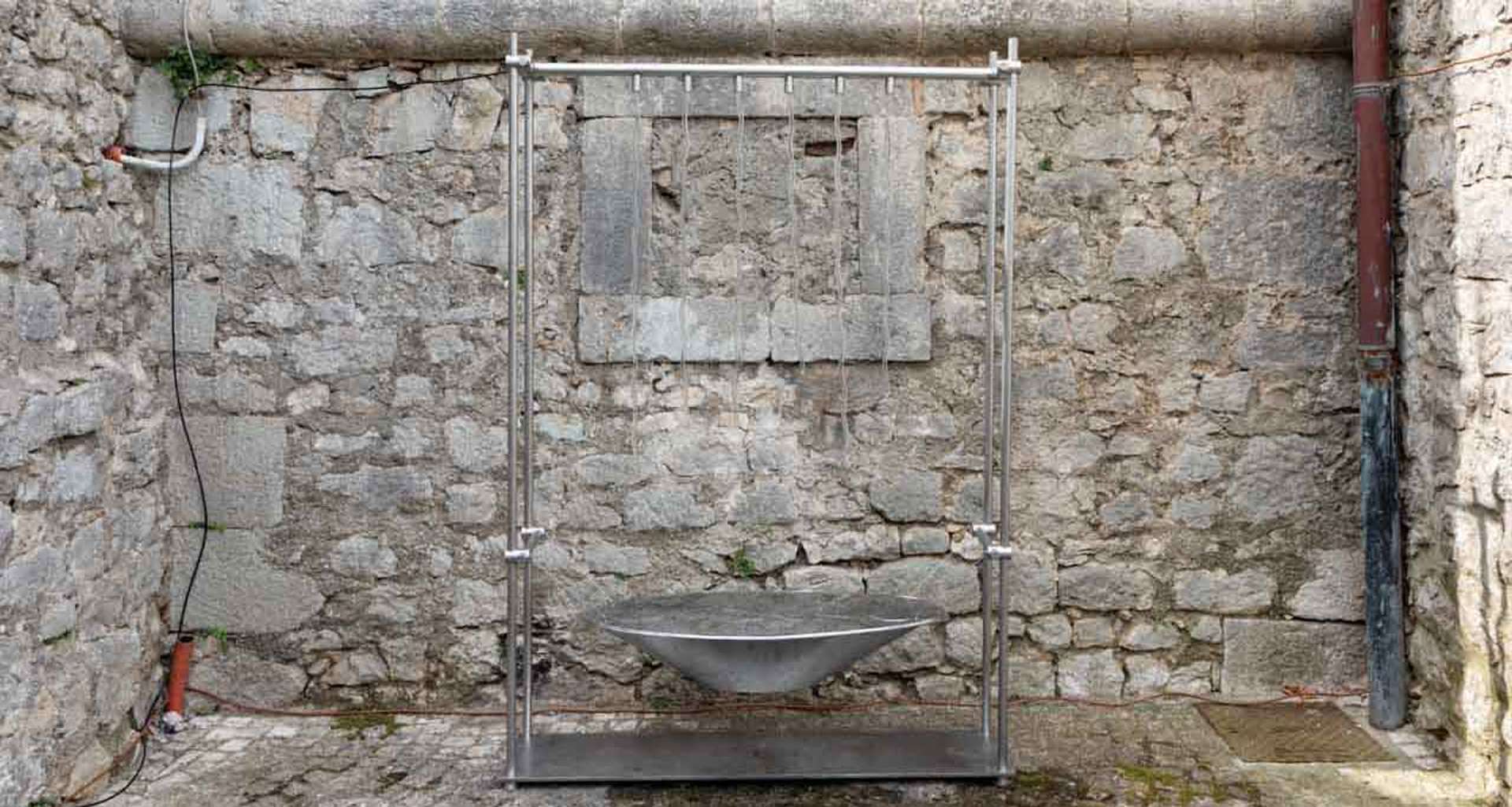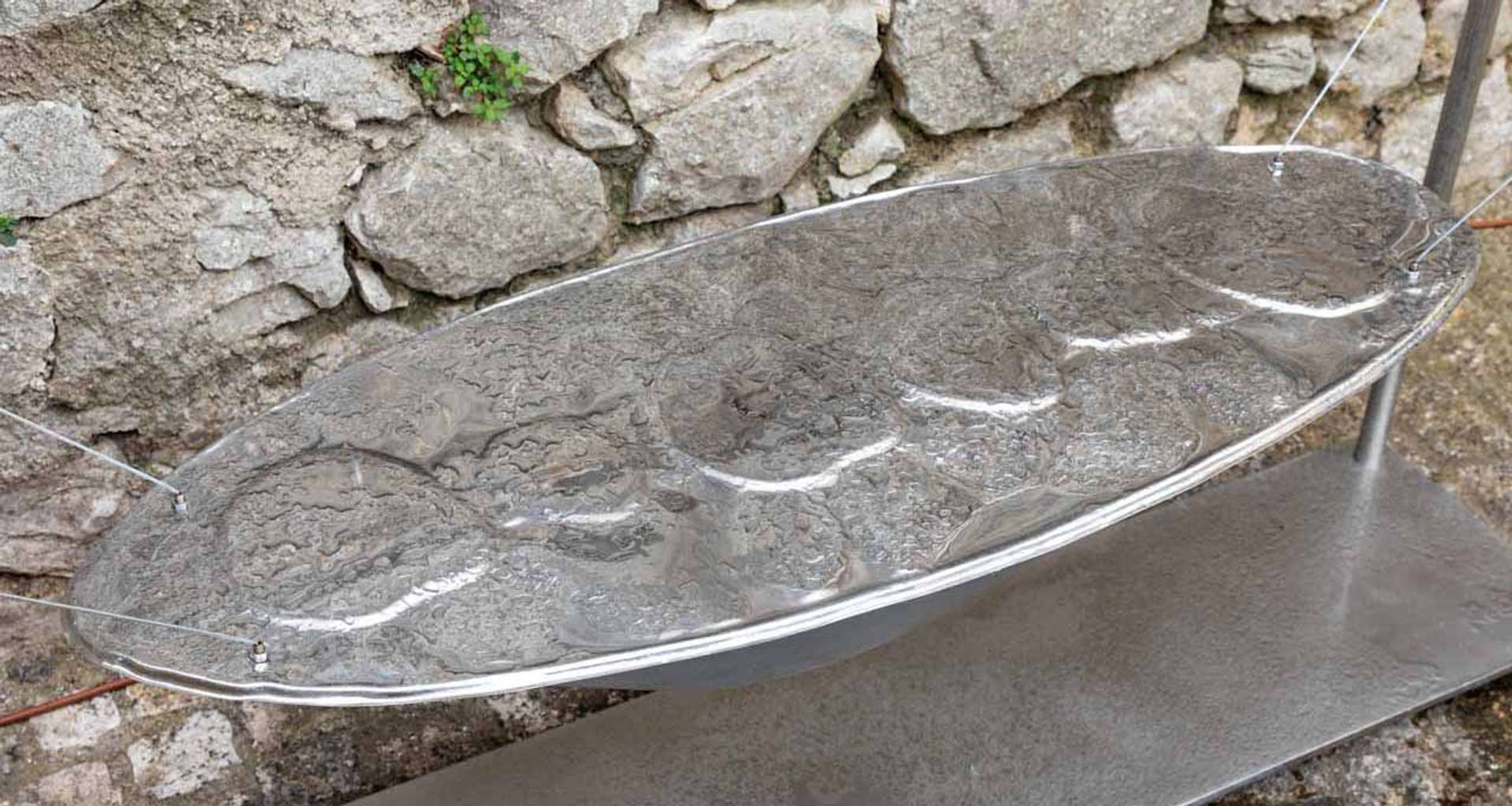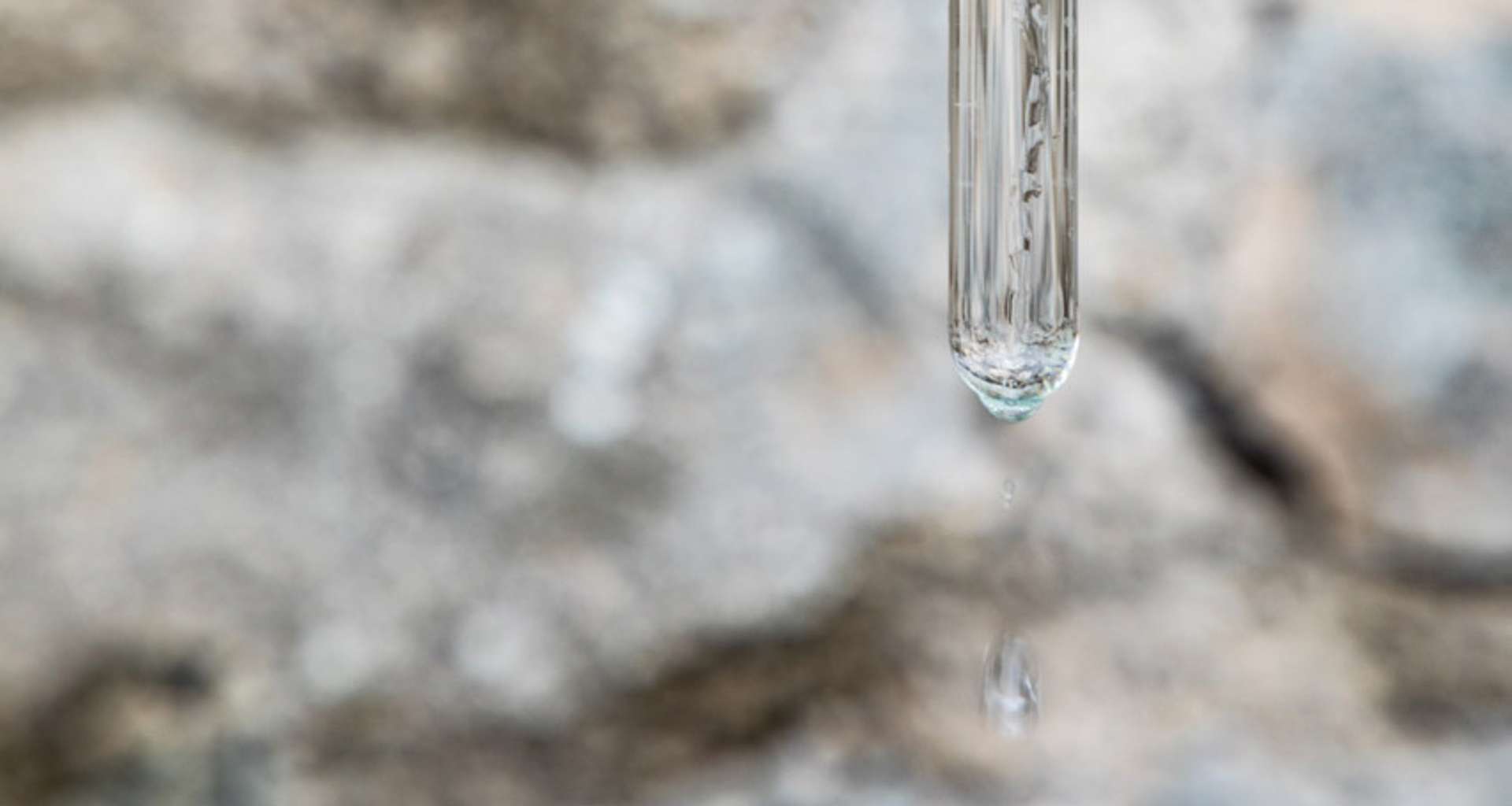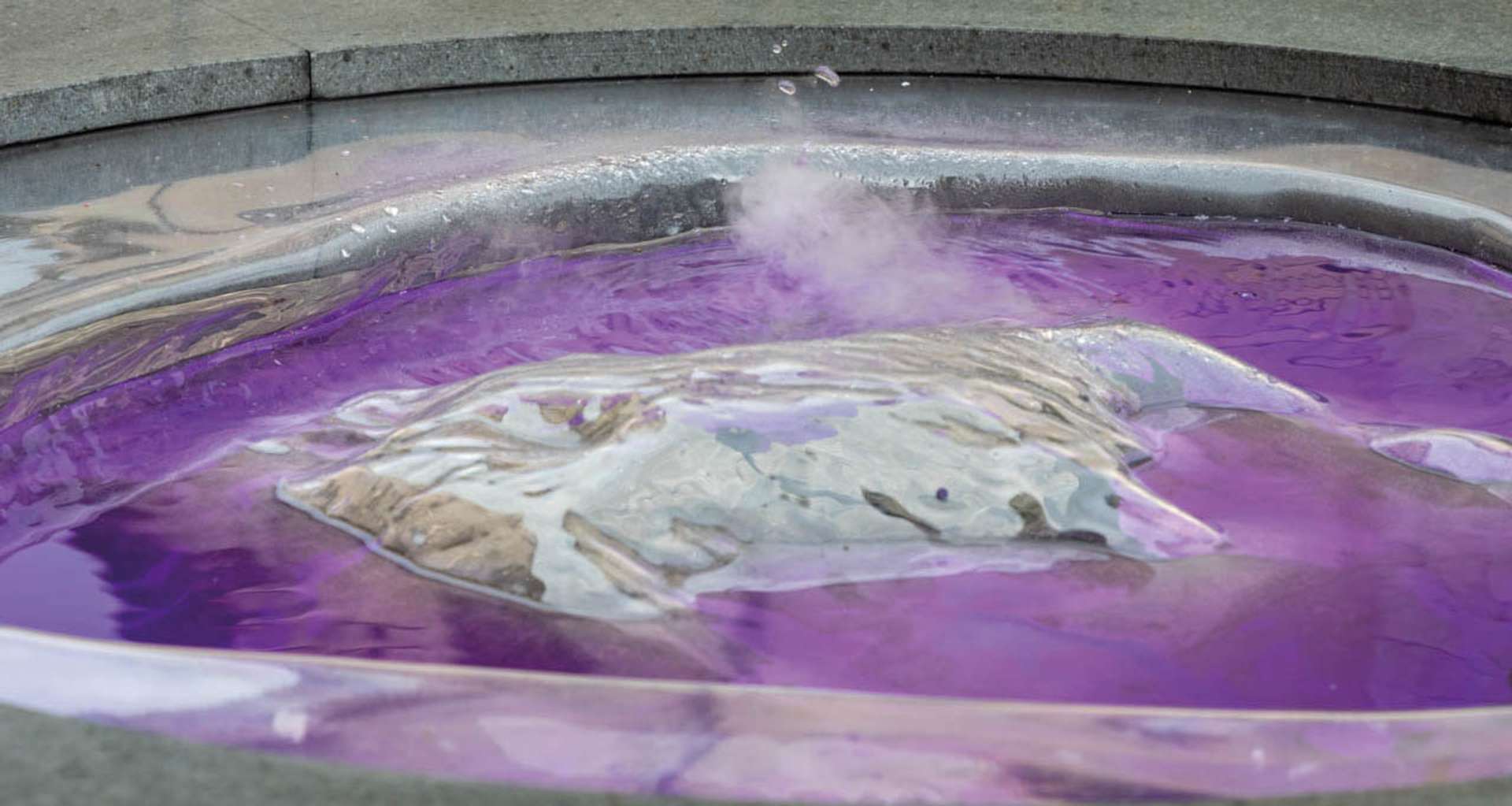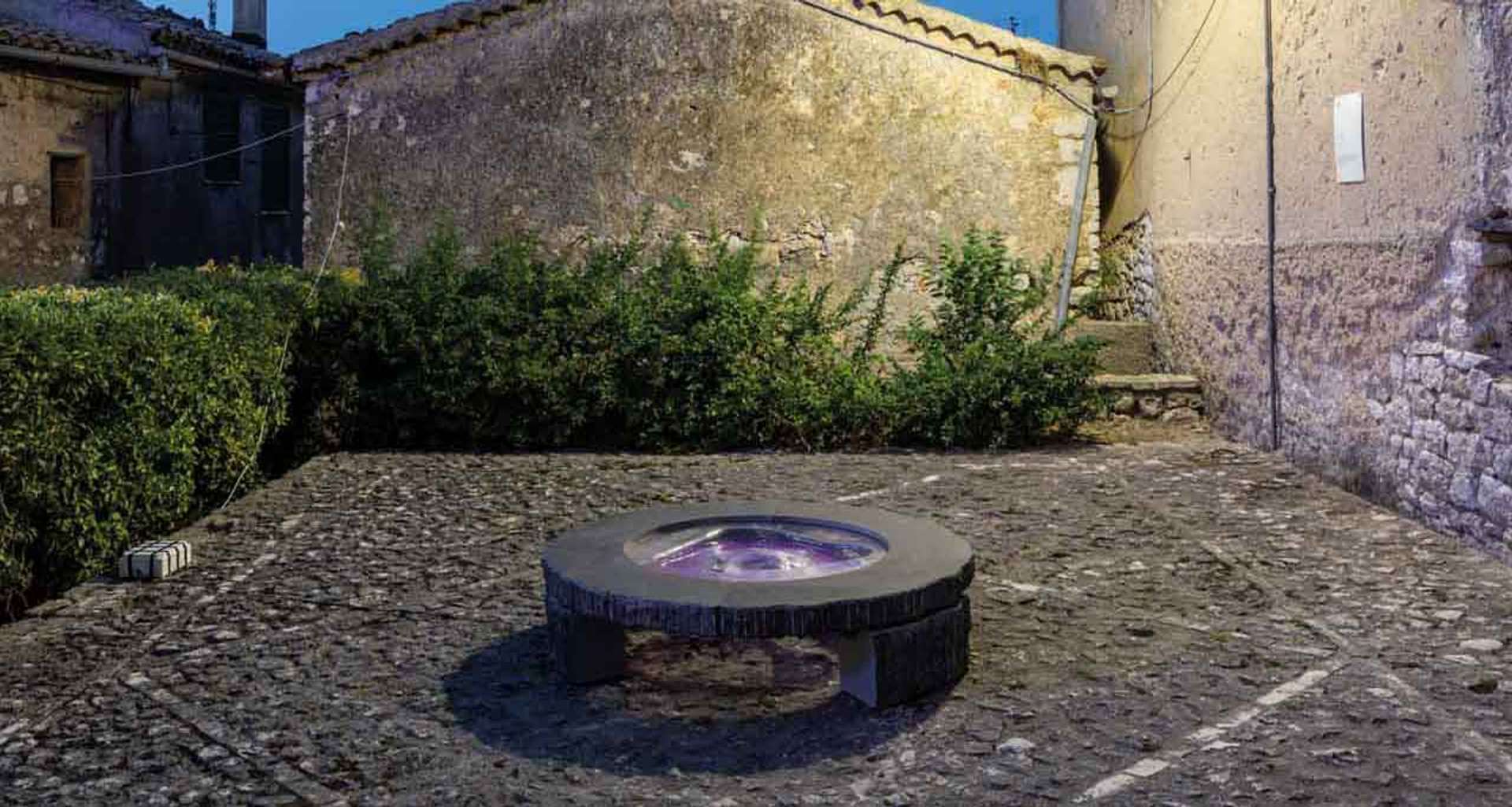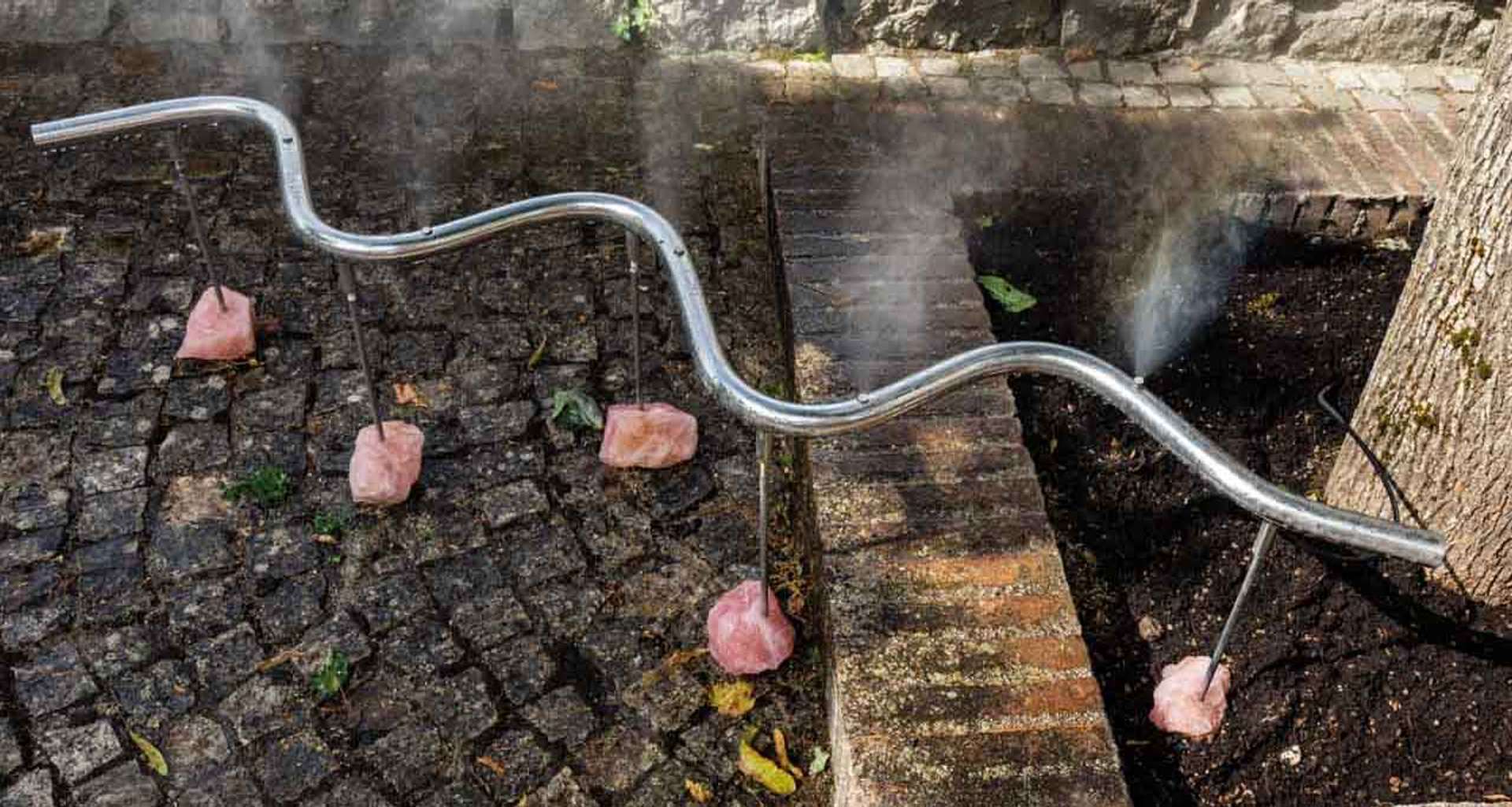Dessislava goes to Fumone: this unexpected encounter between the artist and the Olympus of Ciociaria, which seems to be the opening words of a surreal tale by Raymond Queneau, leads to a project conceived specifically for Una Boccata d’Arte.
The sculptures that the artist created for this project come from her experience in the medieval village, they form an itinerary through this place that seems to have remained frozen in time. Here, the élan vital seems to have run out and even the fountain in the main square seems firm from years.
The first sculpture, Solid and void, stands at the foot of the abandoned building in Via Torricelle and is inspired by a local limestone quarry. It is made up of a sheet of thermoformed plastic on a rock that reveals pigmented water vapor inside, evoking the mist that surrounds Fumone in winter. At the base there is a large Sicilian basalt structure.
The second sculpture, Soundscape, is located at the foot of the bell tower of the Collegiata di Maria SS. Annunziata: the artist wanted to reproduce the sound of bells through a mechanical process that sees water droplets fall onto a metal sheet in a random sequence.
The third sculpture, Mist-y creature, stands out against the landscape below and is made up of rose quartz bases that support a corrugated tube from which steam escapes and disperses into the air.
Dessislava intervenes in the village of Fumone both on a dimensional and material level.
The living sculptures intrigue both visitors and residents with the aim of creating a multi-sensory experience.
WHEN I WORK ON AN ART PROJECT, I ALWAYS TAKE INTO CONSIDERATION THE POINT OF VIEW, PSYCHOLOGY, AND EXPERIENCES OF THE LOCAL AREA. THE THREE SCULPTURES I CREATED FOR THE VILLAGE OF FUMONE REPRESENT THE SENSORY EXPERIENCE I HAD DURING OUR VISIT IN APRIL. THE SMOKE, THE FOG, THE SOUND OF THE BELL TOWER ARE JUST SOME OF THE ELEMENTS THAT INSPIRED MY CREATIVE PROCESS AND RESULTED IN MY CREATIONS. THIS IS HOW THE IMMATERIAL AND THE INTANGIBLE HAVE BECOME THE PROTAGONISTS; THE TANGIBLE PART IS MADE UP OF MATERIALS SUCH AS STONE AND STEEL THAT CAN BE FOUND IN THE VILLAGE
Dessislava Madanska (Smolvan, 1991) is a Bulgarian artist. Educated in Architecture (BArch, Accademia di Architettura di Mendrisio/AR- CHIP), Product design (MA, Sir John Cass Faculty of Art, Architecture and Design) and Spatial design (MFA, Konstfack), she has studied and worked internationally in Switzerland, Italy, Prague, Copenhagen, London and Stockholm.
She has participated in numerous workshops among which are the WAVE by IUAV in Venice (2013) lead by the Australian architect Sean Godsell; One Architecture Week Plovdiv (2014+2015); a 2 weeks trial at FABRICA-Treviso during a workshop with DOSSOFIORITO (2017); Experience design and Performance at Konstfack Research week (2018); and many more. She has also completed a professional course in Sound design and interaction (Konstfack 2020). Prior to dedicating herself to her own artistic practice she has worked as at NORD Architects Copenhagen and other architecture and interior design studios. She is currently working in the fields of Collectible design, sculpture and Installation art.
Her work is an exploration of rituals, of the cosmic, of the eternal beauty of raw materials. Her objects are made out of wood, brass, bronze, marble, travertine, granite and limestone. She creates objects that together form spaces for contemplative, meditative and mindful experiences.
Her work is represented by Galerie Philia-New York, USA and Delisart-Lugano, Switzerland.
Exhibitions: To the Moon and never back, solo exhibition, 2021, Bulgaria; Licking an orchid: Please do not come to the vernissage!,2020, Stockholm, Sweden; Transhumances, Galerie Philia, group shop, 2020, Chateau Barjak, France; New Rituals, Antilia Gallery, 2020, Don’t try this at home; New Rituals, Konstfack degree show, 2020; Galerie Philia Brussels, 2020; Galerie Philia NYC, 2020; Objects for contemplation, Konstfack, 2019; Collectible, 2019.
THE SCULPTURES THAT THE ARTIST CREATED FOR THIS PROJECT COME FROM HER EXPERIENCE IN THE MEDIEVAL VILLAGE, THEY FORM AN ITINERARY THROUGH THIS PLACE THAT SEEMS TO HAVE REMAINED FROZEN IN TIME
Fumone is a village of about 2,000 inhabitants in the province of Frosinone, located between the Ernici and Lepini mountains. The origins of Fumone are ancient and fade into legend: it was mistakenly believed that it was the ancient antenna of the Ernici, the wonderful refuge of Tarquinio the Superb fleeing from Rome when it’s more likely that the geographically favorable position was taken advantage of first by the Ernici and then by the Romans. The name itself, Fumone, derives from a military defense practice dating back to the Middle Ages, which involved raising a column of smoke from the high watchtower, signaling the arrival of imminent danger. The town is accessed through two entrances: the main entrance Porta Romana, and Porta Napoletana, which instead was used more as an emergency exit. The most important building in the historic centre is the Longhi – De Paolis Castle, mentioned for the first time in a 10th century document, but probably dating back to an earlier period. First a military garrison, then a papal prison, the Castle was finally bought by the Longhi family to whose descendants it still belongs. Walking through the streets of the historic centre you will discover houses, walls, towers, and mullioned windows belonging to the medieval period, such as the remains of a kitchen in via Cavone, a robust portico in via Torricelle, as well as traces of polygonal walls in piazza di Porta Romana and along via della Croce.
